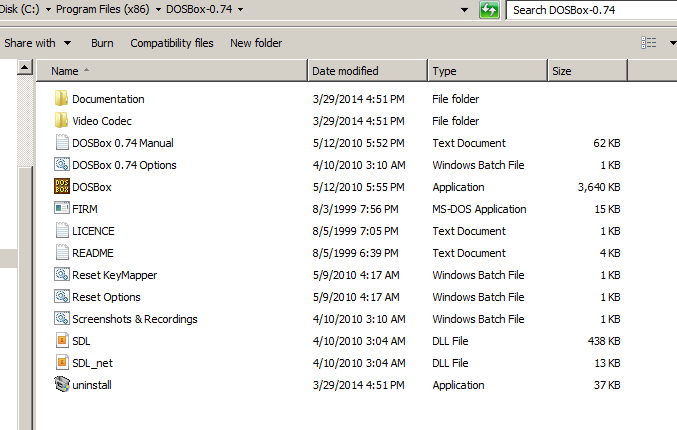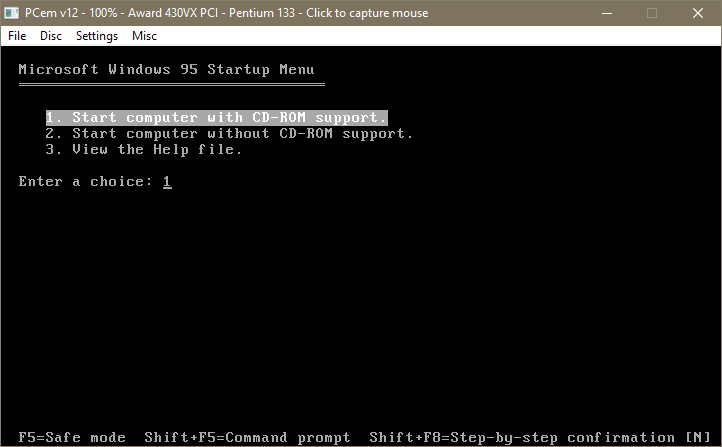

- #Windows 95 emulator down manuals#
- #Windows 95 emulator down install#
- #Windows 95 emulator down drivers#
- #Windows 95 emulator down Pc#
#Windows 95 emulator down install#
Getting started with the install steps, I cd’d into the folder after I’d untar’d it, and then ran pkgadd -d to start the install:Īfter the install completed I got this error that the SunPCI driver was not installed:Ĭd into /opt/SUNWspci and run.
#Windows 95 emulator down manuals#
The official product manuals are still available and can be downloaded from Oracle here: I Googled for a while and found a link to an FTP site that had the SunPCI software… trouble is this was a couple of months ago, and I’ve since gone back to try and find the same site to include a link but I think the site has recently gone down…
#Windows 95 emulator down drivers#
After I did a fresh Solaris 10 install, I needed to find the SunPCI software and drivers which didn’t come with Solaris 10.

I recently picked up a Sun Ultra 60 and was lucky that it came with a SunPCI card.
#Windows 95 emulator down Pc#
Rather than x86 emulation, this approach provided a real x86 CPU and everything you’d expect in a typical PC compatible machine, all on a single card. This was a self-contained x86 PC on a single card that could be installed in Sun Ultra machines, that along with supporting software allowed you to install any operating system that required x86 hardware and run it on your Sun SPARC machine alongside whatever you were natively running on SPARC, such as Solaris. The SunPCI single board computer is an interesting piece of hardware. Windows 95 setup is running – yes you can install x86 based OSes under UTM/QEMU on Apple Silicon! Rerun d:\setup.exe after format completes and now scandisk starts up:

If you try and run d:\setup.exe you’ll be reminded that fdisk doesn’t format your disk, you you need to format c: as well before you can install, otherwise you’ll see: At this point the cd iso should be on d: and c: should be your hdd disk image. To get around this (because it won’t start unless the hd image is first), press Escape as soon as you get the BIOS screen and then you can select the boot device. This works for the first time, but after you’ve formatted the blank disk image, booting a subsequent time fails with a ‘no operating system’ error. While in the settings I also notice if you check the ‘advanced’ checkbox there’s options to turn of UEFI boot as that wouldn’t have been on PCs of this era, and changed the CPU to a 486:Īdding a blank 4GB disk image, a Windows 95 boot floppy image, the iso image for install cdrom, and then starting up, we can boot to a DOS prompt and start fdisk to format the blank disk image: I added the disks in this order and this seems to work: One of the comments here does mention that the hdd disk image needs to be first (even though the dialog says the listed order is the boot order). Here’s where you add the disk images, and a summary of the other settings:ĭoing some searching online it’s not immediately obvious if this is a configuration issue or a bug in UTM. I added 3 drives, floppy (to boot from install disk image), a CD-ROM (for the install ISO) and a 4GB drive to install to: Let’s take a go at emulating an x86 32bit and install Windows 95. Is there any CPU architecture that QEMU does not emulate? This is pretty amazing: It turns out there a QEMU build for Apple silicon M1, and there’s also a gui frontend to help with the configuration of various machines, called UTM. I’ve played with QEMU on MacOS before to install and run Solaris on SPARC. QEMU is an emulator for a wide range of machine architectures.


 0 kommentar(er)
0 kommentar(er)
